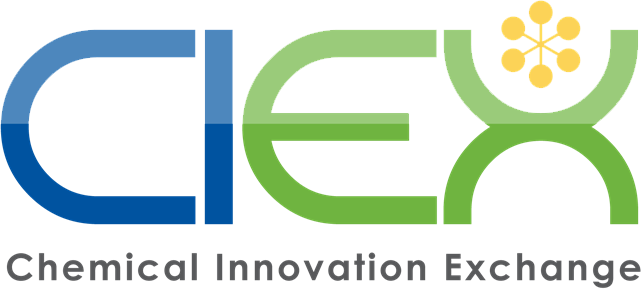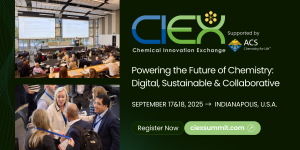Staying Ahead: How the Chemical Industry Can Remain Competitive Beyond 2030
In this article, industry leaders from LanzaTech, BASF, Evonik, Dow, DuPont, Syensqo, Arkema, PPG, Cabot and more share what it takes to lead in a decarbonized, digital future.
The chemical industry is undergoing one of the most significant transformations in its history. To remain competitive beyond 2030, companies must fundamentally rethink how they operate, innovate, and deliver value in a rapidly evolving global economy.
Sustainability, circularity, digitalization, and talent development are no longer optional—they are the engines of growth and resilience. We asked thought leaders from across the industry who will participate in CIEX 2025 to share the critical capabilities that will define tomorrow’s winners.
Their responses make one thing clear: future competitiveness requires bold reinvention, not cautious optimization.
Circularity Is the New Value Driver
For decades, the industry has focused on linear models of production—extract, produce, dispose. This model is no longer viable in a world demanding sustainability and accountability.
“One of the most critical capabilities chemical companies must develop to remain competitive is the integration of circular supply chain principles,” says Jennifer Holmgren, CEO of LanzaTech. LanzaTech’s technology turns waste carbon into raw material, effectively giving emissions a second life. This isn’t just a climate solution—it’s a business opportunity. “This isn’t circularity for circularity’s sake,” Holmgren continues. “There is profit to be made in using our waste to create more product. Companies that invest early can capture more of the value chain, gaining a strategic edge and driving higher margins in a premium segment of the energy market.”
Jean Vincent, Head of RD&I Americas at Evonik, agrees: “The world is changing at a drastic pace. Companies must fully embrace not just the concept of sustainability, but also ways to bring it to reality while maintaining competitiveness.”
Peter Votruba-Drzal, VP Global Sustainability at PPG, reinforces this view: “We don’t have a sustainability strategy—we have a business strategy rooted in sustainability and operational excellence. Collaboration with customers and suppliers is essential to create value through sustainability.”
Sustainability Must Be Embedded in Strategy
To thrive in a low-carbon economy, companies need to embed sustainability into every level of their operations—from raw materials sourcing to manufacturing and product development. “Mastering a circular economy, sustainable renewable sourcing of raw materials, and low-carbon emission processes—along with digital and AI-driven innovation—are imperatives,” says Arthur Martin, VP R&D North America at Arkema. Peter Votruba-Drzal illustrates how this plays out in practice: “We define sustainably advantaged products through a rigorous methodology aligned with the UN Sustainable Development Goals. This approach transforms value creation and is embedded throughout the product development process.”
This approach goes far beyond compliance. Forward-thinking companies are treating sustainability as a competitive advantage, unlocking growth in new markets while aligning with the evolving expectations of regulators, customers, and investors.
A New Mindset for a New Era
For global chemical companies like BASF, the key to navigating future challenges lies in entrepreneurial thinking. “We need to sense how the world is changing and adapt quickly,” says Dr. Amit Gokhale, Director of Process and Chemical Engineering R&D at BASF. “That means adopting new technologies, building new business models, and increasing our tolerance for risk.” He emphasizes that collaboration—between companies, suppliers, customers, and even competitors—will be essential for reducing investment risk and accelerating the scale-up of next-gen solutions.
Patricia Hubbard, SVP and CTO at Cabot, agrees and stresses the importance of adaptability: “Companies must actively seek new information and design systems to evolve under uncertainty to stay competitive.” The CIEX 2025 conference will provide a great opporunity to hear successful case studies, find collaborators and develop new ideas.
The Digital Leap: AI as a Strategic Capability
In the race to stay ahead, artificial intelligence (AI) and digital technologies are emerging as transformative tools—not just for productivity but for discovery, decision-making, and engagement. “Chemical companies need to adopt AI and build an AI culture,” says Mike Finelli, Chief Technology & Innovation Officer at Syensqo. “This includes leveraging AI for process optimization, accelerated discovery, and customer engagement. It’s imperative to remain competitive in an increasingly digital market.” AI allows R&D teams to reduce trial-and-error in labs, optimize supply chains, and customize products faster and more precisely than ever before.
“The tools available for understanding the science and evaluating the impact of materials are advancing at an unprecedented pace,” adds A.N. Sreeram, CTO and SVP of R&D at Dow. “Companies must stay at the forefront of rigorous analysis while being as nimble and responsive as possible.”
Talent, Trade-Offs, and the Innovation Engine
Technology alone won’t deliver transformation—people will. That means building a workforce ready to lead across sustainability, science, digital, and systems thinking. “Innovators will need to balance often conflicting trade-offs—performance, sustainability, resilience—with an increasing focus on speed,” says Marty DeGroot, VP Technology at DuPont. He emphasizes that innovation must now consider the full value chain and how decisions reverberate across complex ecosystems. “This will require access to modern capabilities and a strong emphasis on talent development and upskilling to use these capabilities effectively.”
Patricia Hubbard adds a crucial lens on timing innovation: “Timing is the hardest aspect of scaling innovation. The best practice is to keep options open, build flexible assets, and invest when customers are ready to scale. This approach helps de-risk growth while aligning with business goals.”
Reinventing the Future—Now
What does it truly mean to be competitive beyond 2030? It means developing low-carbon technologies and circular models—not as side projects, but as core business strategies. It means using AI not just to automate, but to accelerate invention. And it means empowering people across the organization to lead with curiosity, courage, and collaboration. “Chemical companies that invest early,” says Jennifer Holmgren, “can capture more of the value chain from feedstock to final product.”
The challenge ahead is clear—but so is the opportunity. The companies that act boldly today will not just survive tomorrow. They will lead it.
Powering the Future of Chemical Industry at CIEX 2025 Summit
CIEX is the leading platform for senior-level R&D, innovation, and sustainability professionals from the consumer, industrial, and specialty chemical sectors. Now in its 11th edition, CIEX is focused on creating value by bringing together the right people, fostering synergies, and actively facilitating connections among potential partners.
Join us on September 17 & 18, 2025, in Indianapolis, U.S.A. and get exclusive access to the community powering the future of chemistry — digital, sustainable and collaborative!
🎟Register today to secure your spot!


